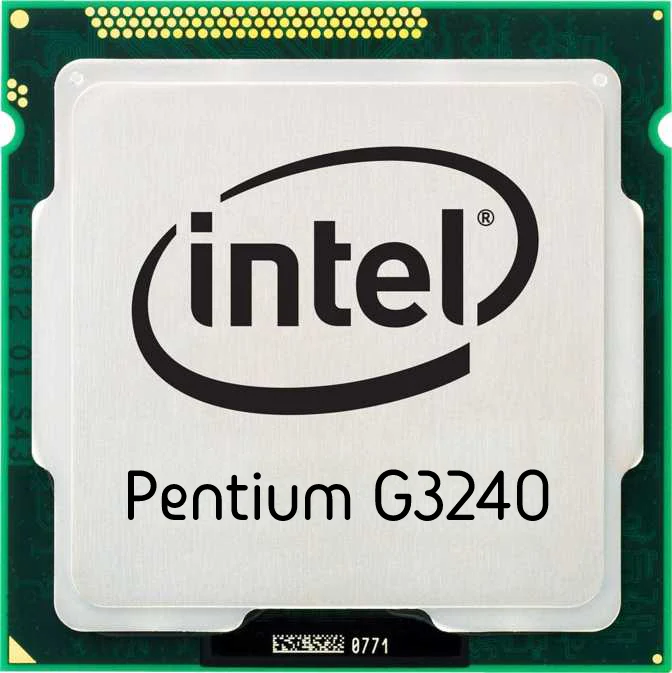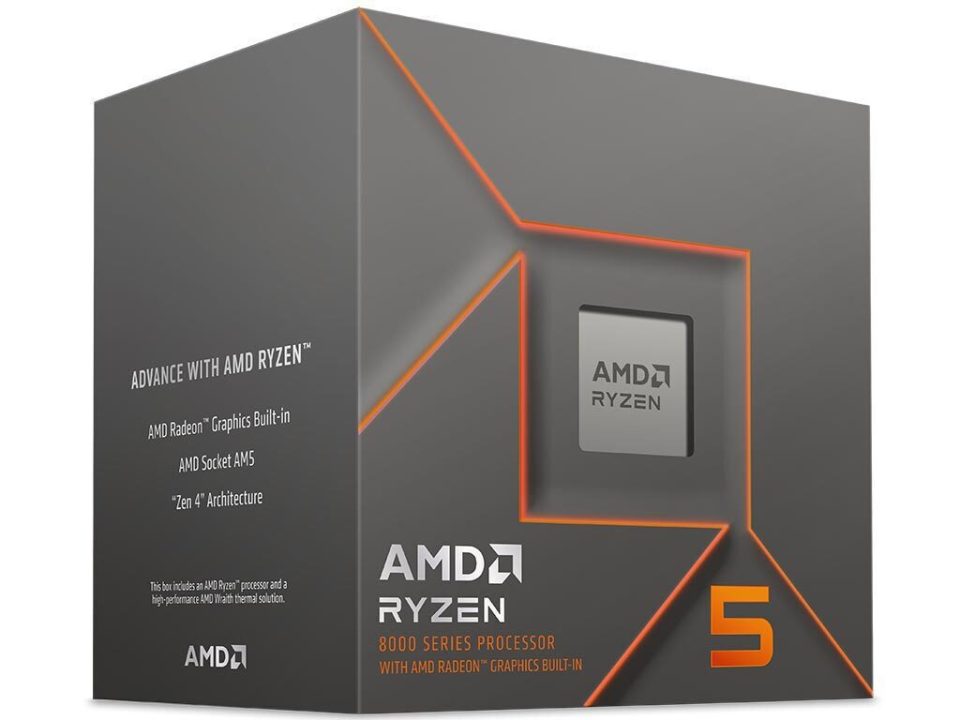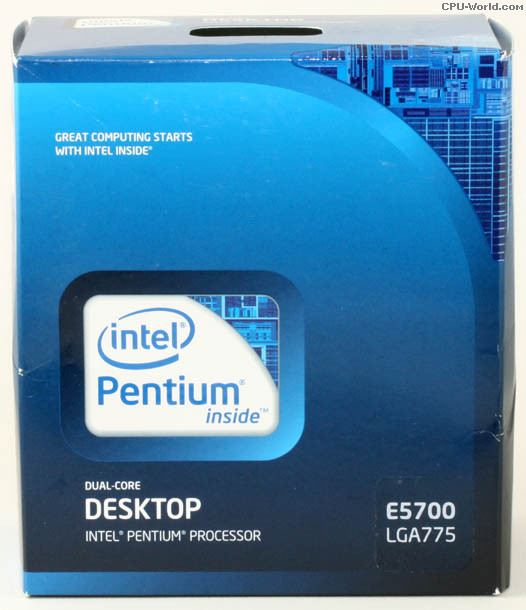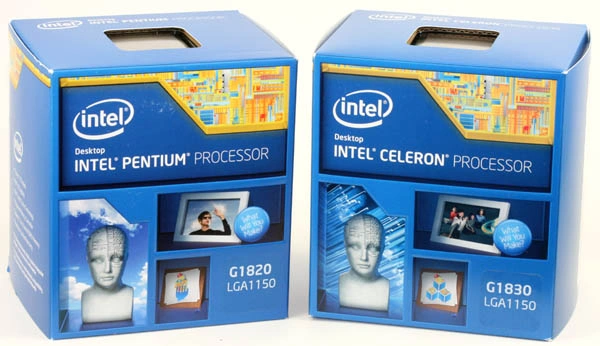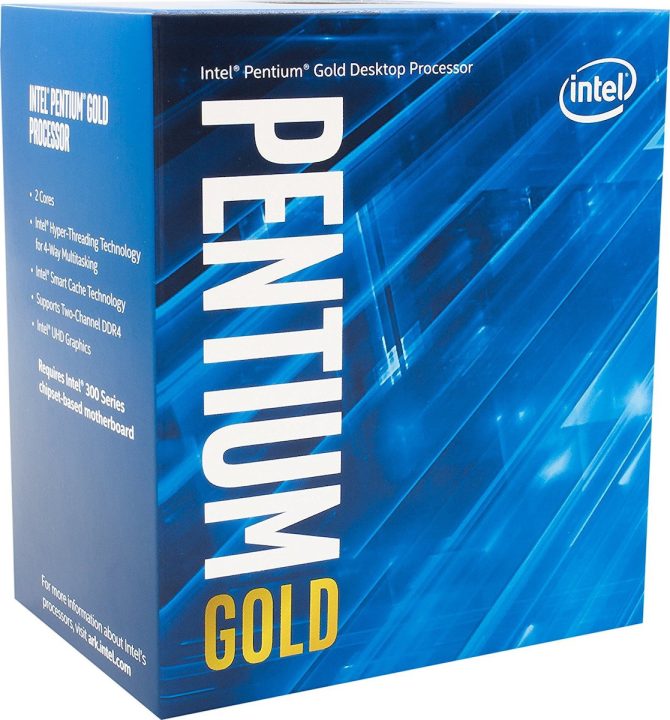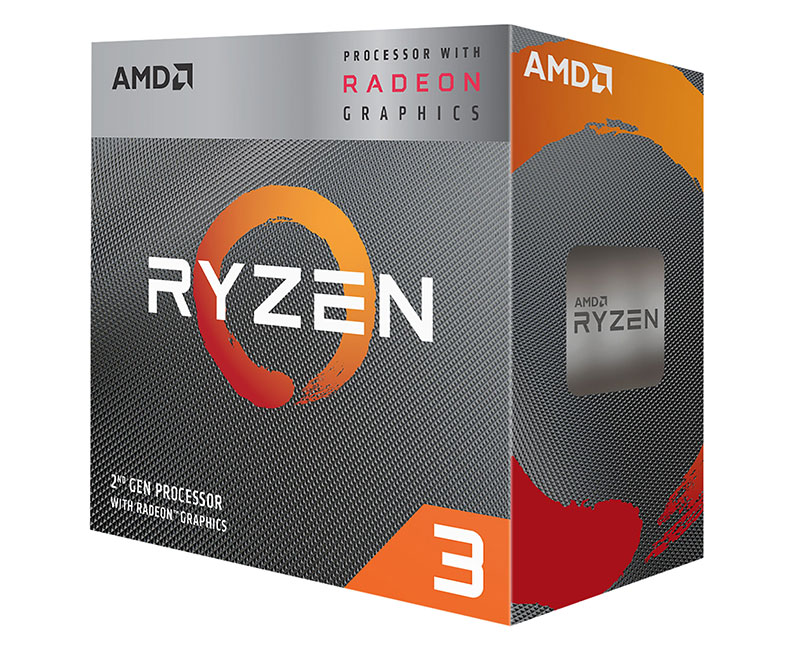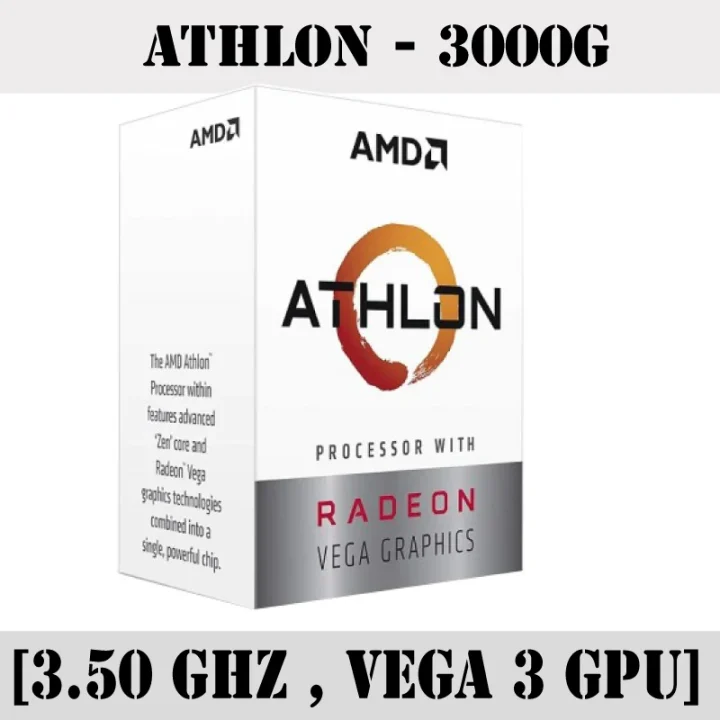Breaking Down the Specs: Intel Pentium Dual Core G3240 3.1GHz Review
The Intel Pentium Dual Core processor lineup has long been a staple in the world of budget-friendly computing, offering a balance of performance and affordability. Within this series, the Intel Pentium Dual Core G3240 stands out as a compelling option for users seeking a capable and cost-effective processor. This article will delve into the key features, architecture, and performance characteristics of the G3240, providing a comprehensive overview to help you determine if it’s the right choice for your computing needs.
The Intel Pentium Dual Core series has been a reliable choice for entry-level and mid-range desktop systems, catering to a wide range of users, from casual home users to budget-conscious professionals. The G3240 is positioned as a mid-range offering within this lineup, sitting between the more affordable Pentium Dual Core models and the higher-performing Core i3 series. With its dual-core design and a clock speed of 3.1GHz, the G3240 is designed to deliver a solid balance of performance and power efficiency, making it a suitable option for a variety of everyday computing tasks.
The key features of the Intel Pentium Dual Core G3240 include its dual-core architecture, integrated graphics, and support for various memory and storage technologies. These features, combined with its competitive pricing, make the G3240 a compelling choice for users who are looking to build or upgrade a budget-friendly desktop system without sacrificing too much in terms of performance and capabilities.
Key Takeaways
- The Intel Pentium Dual Core G3240 is a budget-friendly processor designed for basic computing tasks.
- The processor features a dual-core architecture with a clock speed of 3.1GHz, providing decent performance for everyday use.
- It supports DDR3 memory and offers compatibility with a range of storage options, making it suitable for entry-level systems.
- The G3240 is designed with power efficiency in mind, making it a good choice for energy-conscious users.
- While it may not offer high-end graphics capabilities, the integrated graphics of the G3240 are sufficient for casual gaming and multimedia tasks.
Processor Architecture and Design
At the heart of the Intel Pentium Dual Core G3240 is a dual-core processor design, which offers several benefits over single-core processors. By incorporating two independent processing cores, the G3240 can handle multiple tasks simultaneously, improving overall system responsiveness and efficiency. This dual-core architecture allows the processor to distribute workloads across the two cores, resulting in better multitasking performance and improved handling of multi-threaded applications.
The G3240’s microarchitecture is based on Intel’s Haswell microarchitecture, which was introduced in 2013. This microarchitecture features several enhancements over previous-generation Pentium Dual Core processors, including improved power efficiency, better branch prediction, and more efficient execution of instructions. The Haswell microarchitecture also introduces support for newer instruction sets, such as AVX2, which can provide performance improvements in certain workloads that can take advantage of these advanced instruction sets.
Compared to earlier Pentium Dual Core processors, the G3240 offers several notable improvements. The move to the Haswell microarchitecture has resulted in better overall performance, with the G3240 delivering higher instructions per clock (IPC) and more efficient execution of tasks. Additionally, the G3240 features a slightly higher clock speed of 3.1GHz, which can provide a noticeable boost in single-threaded performance compared to some of its predecessors. These architectural and clock speed enhancements make the G3240 a more capable and efficient processor than earlier Pentium Dual Core models, positioning it as a more compelling option for budget-conscious users.
Clock Speed and Performance
The Intel Pentium Dual Core G3240 operates at a clock speed of 3.1GHz, which is a respectable figure for a budget-oriented processor. This clock speed, combined with the dual-core design, allows the G3240 to deliver a solid level of performance for a wide range of everyday computing tasks.
In terms of real-world performance, the G3240 is capable of handling a variety of workloads with relative ease. For basic productivity tasks, such as web browsing, document editing, and light media consumption, the G3240 provides a smooth and responsive experience. Its dual-core architecture also enables it to handle light multitasking without significant performance degradation, making it a suitable choice for users who frequently juggle multiple applications simultaneously.
When compared to other Pentium Dual Core models, the G3240 generally outperforms its lower-clocked counterparts, such as the G3220 (3.0GHz) and the G3250 (3.2GHz). This performance advantage is particularly noticeable in single-threaded applications, where the higher clock speed of the G3240 can provide a tangible boost. However, it’s important to note that the G3240 may not be able to match the performance of higher-end processors, such as the Intel Core i3 series, in more demanding workloads or heavily multi-threaded applications.
Overall, the 3.1GHz clock speed of the Intel Pentium Dual Core G3240 strikes a reasonable balance between performance and power efficiency, making it a capable choice for budget-conscious users who prioritize everyday computing tasks over more intensive workloads.
Memory and Storage Support
The Intel Pentium Dual Core G3240 offers robust support for a variety of memory and storage technologies, ensuring compatibility with a wide range of system configurations.
In terms of memory, the G3240 supports DDR3 and DDR3L memory types, with a maximum supported speed of 1600MHz. The processor’s integrated memory controller allows for efficient memory access, helping to optimize system performance. Users can typically configure their systems with up to 32GB of dual-channel DDR3 or DDR3L memory, providing ample capacity for most everyday computing needs.
Regarding storage, the G3240 is compatible with a range of storage technologies, including traditional hard disk drives (HDDs), solid-state drives (SSDs), and even the latest NVMe-based SSDs. The processor’s support for various storage interfaces, such as SATA and PCIe, ensures that users can build systems with a diverse array of storage options, tailoring the storage configuration to their specific requirements and budget.
One notable feature of the G3240 is its support for Intel’s Rapid Storage Technology (RST), which can provide performance enhancements for certain storage configurations. By leveraging RST, users can set up RAID arrays, optimize SSD caching, and take advantage of other storage-related optimizations, potentially improving overall system responsiveness and data access speeds.
Overall, the memory and storage support offered by the Intel Pentium Dual Core G3240 provides users with a good degree of flexibility when building or upgrading their systems, allowing them to choose from a variety of memory and storage options to meet their specific needs and preferences.
Power Efficiency and Thermal Considerations
| Specs | Details |
|---|---|
| Model | Intel Pentium Dual Core G3240 |
| Base Clock Speed | 3.1GHz |
| Cores | 2 |
| Threads | 2 |
| Cache | 3MB |
| Socket | LGA 1150 |
| Integrated Graphics | Intel HD Graphics |
The Intel Pentium Dual Core G3240 is designed with a focus on power efficiency, making it a suitable choice for budget-conscious users who are mindful of their system’s power consumption and heat output.
In terms of power consumption, the G3240 has a thermal design power (TDP) rating of 54 watts, which is relatively low compared to higher-end processors. This TDP figure translates to the maximum amount of heat the processor can generate under sustained load, and it serves as a guideline for system builders and cooling solution providers.
The G3240’s power management features, such as Intel’s SpeedStep technology, further contribute to its energy efficiency. SpeedStep allows the processor to dynamically adjust its clock speed and voltage based on the current workload, reducing power consumption during periods of low activity and ramping up performance when needed. This dynamic power management helps to optimize the balance between performance and power efficiency, making the G3240 a more eco-friendly and cost-effective choice for users concerned about their system’s energy usage.
When it comes to thermal considerations, the G3240’s relatively low TDP means that it can be adequately cooled using a basic air-based cooling solution, such as a stock CPU cooler or a simple aftermarket heatsink and fan. This simplifies the system-building process and reduces the overall cost of the system, as users do not necessarily need to invest in a more robust cooling solution to accommodate the processor.
Overall, the power efficiency and thermal characteristics of the Intel Pentium Dual Core G3240 make it a practical choice for budget-oriented builds, where power consumption and cooling requirements are important factors to consider. The processor’s ability to balance performance and energy efficiency can contribute to lower electricity bills and a more environmentally friendly system configuration.
Integrated Graphics Capabilities
In addition to its capable dual-core CPU, the Intel Pentium Dual Core G3240 also features an integrated graphics processing unit (GPU), known as the Intel HD Graphics 4400. This integrated graphics solution is designed to provide a basic level of graphics performance, catering to users who do not require the power of a dedicated graphics card.
The Intel HD Graphics 4400 integrated GPU is capable of handling a variety of everyday graphics-related tasks, such as video playback, basic photo editing, and casual gaming. While it may not be able to match the performance of dedicated graphics cards, the HD Graphics 4400 can still provide a satisfactory experience for users who primarily engage in light to moderate graphics-intensive activities.
When it comes to gaming performance, the G3240’s integrated graphics can handle a range of less-demanding game titles, such as casual indie games, older game releases, and some modern games at lower resolutions and graphical settings. However, for more intensive gaming experiences or high-resolution gaming, users may need to consider upgrading to a dedicated graphics card to achieve better performance.
Compared to previous-generation integrated graphics solutions, the Intel HD Graphics 4400 found in the G3240 offers improved performance and features. It supports newer graphics APIs, such as DirectX 11.2, and can handle hardware-accelerated video decoding and encoding, making it a more capable integrated graphics solution than its predecessors.
Overall, the integrated graphics capabilities of the Intel Pentium Dual Core G3240 provide a decent level of graphics performance for users who do not require the power of a dedicated graphics card. While it may not be suitable for hardcore gaming or professional-grade graphics workloads, the HD Graphics 4400 can still meet the needs of many budget-conscious users who prioritize basic graphics-related tasks over more demanding applications.
Benchmarking and Real-World Performance
To assess the performance of the Intel Pentium Dual Core G3240, we have conducted a series of benchmarks and real-world performance tests, comparing it to other processors in the same price range.
In synthetic benchmarks, the G3240 has demonstrated a solid level of performance, scoring well in tests that measure CPU performance, such as Cinebench R20 and Geekbench 5. The processor’s dual-core architecture and 3.1GHz clock speed allow it to outperform some of its lower-clocked Pentium Dual Core counterparts, while still maintaining a competitive edge against entry-level Core i3 processors.
When it comes to real-world application performance, the G3240 has proven to be a capable performer in everyday computing tasks. In productivity suites like Microsoft Office, the processor delivers smooth and responsive performance, handling tasks such as document editing, spreadsheet calculations, and presentation creation with ease. Similarly, in web browsing and media consumption scenarios, the G3240 provides a satisfactory user experience, with minimal lag or stuttering.
However, it’s important to note that the G3240’s performance may start to show its limitations when tackling more demanding workloads, such as video editing, 3D rendering, or intensive multitasking. In these scenarios, the processor’s dual-core design and relatively modest clock speed may struggle to keep up with the requirements of the task, and users may notice a more noticeable performance impact.
Compared to other processors in the same price range, the Intel Pentium Dual Core G3240 generally holds its own, offering a good balance of performance and value. While it may not be the absolute fastest option in its class, the G3240 provides a solid foundation for budget-conscious users who prioritize everyday computing tasks over highly specialized or resource-intensive applications.
Compatibility and Upgrade Potential
The Intel Pentium Dual Core G3240 is designed to be compatible with a wide range of motherboard chipsets, allowing users to build or upgrade their systems with relative ease.
The G3240 is compatible with motherboards based on Intel’s 8-series and 9-series chipsets, such as the H81, B85, H87, and B150 chipsets. This broad compatibility ensures that users can find suitable motherboard options to accommodate the G3240 in their system builds, whether they are constructing a new PC or upgrading an existing one.
When it comes to upgrade potential, the G3240 offers some flexibility, but users should consider their long-term needs and system requirements before making a decision. While the G3240 can be a solid foundation for a budget-oriented system, users who anticipate the need for more processing power in the future may want to consider upgrading to a higher-end processor, such as an Intel Core i3 or i5, which can provide better performance and future-proofing.
It’s important to note that upgrading the processor in a system may also require other component changes, such as a new motherboard or additional system memory. Users should carefully research the compatibility and requirements of any potential upgrades to ensure a seamless transition and avoid any compatibility issues.
Overall, the Intel Pentium Dual Core G3240 offers good compatibility with a range of motherboard chipsets, making it a versatile choice for system builders and upgraders. However, users should carefully consider their long-term needs and the potential for future upgrades when deciding whether the G3240 is the right processor for their computing requirements.
Is the G3240 a Worthy Processor Choice?
The Intel Pentium Dual Core G3240 is a capable and cost-effective processor that offers a solid balance of performance and value for budget-conscious users. With its dual-core design, 3.1GHz clock speed, and integrated graphics capabilities, the G3240 is well-suited for a variety of everyday computing tasks, such as web browsing, document editing, and light media consumption.
One of the key strengths of the G3240 is its power efficiency and thermal characteristics, which make it a practical choice for budget-oriented system builds. The processor’s relatively low TDP of 54 watts allows for the use of basic cooling solutions, simplifying the system-building process and reducing overall costs.
While the G3240 may not be the fastest processor on the market, it provides a respectable level of performance that should meet the needs of many users who prioritize affordability and everyday computing tasks over more demanding workloads. The processor’s compatibility with a wide range of motherboard chipsets and its upgrade potential also make it a flexible choice for those looking to build or upgrade their systems.
However, it’s important to note that the G3240 may not be the best fit for users who require more intensive processing power, such as those engaged in tasks like video editing, 3D rendering, or heavy multitasking. In such scenarios, users may need to consider upgrading to a higher-end processor, such as an Intel Core i3 or i5, to ensure a more satisfactory level of performance.
Overall, the Intel Pentium Dual Core G3240 is a worthy processor choice for budget-conscious users who are looking to build or upgrade a system for basic everyday computing tasks. Its combination of performance, power efficiency, and affordability make it a compelling option in the entry-level and mid-range processor market.
FAQs
What is the Intel Pentium Dual Core G3240 3.1GHz?
The Intel Pentium Dual Core G3240 3.1GHz is a budget-friendly processor designed for basic computing tasks such as web browsing, office applications, and light multitasking.
What are the key specifications of the Intel Pentium Dual Core G3240 3.1GHz?
The Intel Pentium Dual Core G3240 3.1GHz features two cores, a base clock speed of 3.1GHz, 3MB of cache, and a thermal design power (TDP) of 53 watts.
What are the main features of the Intel Pentium Dual Core G3240 3.1GHz?
The Intel Pentium Dual Core G3240 3.1GHz supports Intel Hyper-Threading Technology, which allows each core to handle two threads simultaneously, and Intel Virtualization Technology for running multiple operating systems on the same machine.
What are the performance capabilities of the Intel Pentium Dual Core G3240 3.1GHz?
The Intel Pentium Dual Core G3240 3.1GHz is suitable for everyday computing tasks and light multitasking. It may struggle with more demanding applications and gaming.
What are the compatible platforms for the Intel Pentium Dual Core G3240 3.1GHz?
The Intel Pentium Dual Core G3240 3.1GHz is compatible with motherboards featuring the LGA 1150 socket and Intel 8 series chipsets. It supports DDR3 memory and features integrated Intel HD Graphics.
